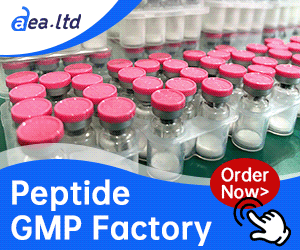- Joined
- Jul 9, 2012
- Messages
- 1,526
- Reaction score
- 554
- Points
- 83
Where it comes from: Tetradecylthioacetic Acid (also known—and more easily pronounced—as TTA) is a fatty acid that does not get used for fuel by the body, but instead helps to regulate how much fat the body stores by influencing genes that control the metabolism. It's delivered to the body in supplement form.
What it'll do for you: "Early studies are suggesting that [TTA] helps to burn fat from the body without the need for exercise," explains Amy Shapiro, RD and CDN of AWS Nutrition. Often used in conjunction with other supplements (such as sesamin), TTA can help individuals feel full more quickly while the fatty acid decreases overall hunger and burns fat. In addition to regulating fat metabolism, this fatty acid has antioxidant, anti-inflammatory and immunity-enhancing properties. Here, a closer look at the key benefits:
May aid in fat-loss efforts
TTA has been found to enhance mitochondrial function and therefore increase the energy level in cells (also known as the metabolism), which further equals an increased fat loss. In 2009, a Norwegian study observed rats on a high-fat diet for seven weeks. Despite eating even more food than usual during the final two weeks, the rats fed TTA gained less body weight than the other rats not getting TTA. This effect has been found independent exercise. "If you exercise, too, it will speed up your fat loss because your body will continue to burn fat at rest and when exercising," explains Shapiro.
May lower cholesterol
Research suggests that TTA activates receptors that are responsible for decreasing the creation of LDL particles (the bad cholesterol). Eighteen healthy men between the ages of 18 and 55 were given doses of TTA for one week—and were studied for an additional week after supplementation stopped. The researchers concluded that TTA reduced the total plasma cholesterol and triacylglycerol levels by 17 percent by increasing the number of mitochondria and by stimulating the oxidation of normal fatty acids. What do Triglycerides matter? Shapiro explains it: "These are fats in the blood so, if TTA helps to increase fat burn, it makes sense that there would also be less fat floating in the blood."
Boosts insulin sensitivity
Due to the mitochondria's increased activity, the body's cells use glucose more efficiently with less insulin, which is known to increase fat storage. Accordingly, with less insulin, less fat buildup results.
Suggested intake: TTA is often found in fat-lass products such as LipidFX by SciVation and is also marketed as the headliner ingredient with bonus minerals (TTA with electrolytes!).
Studies have demonstrated that TTA is safe and well tolerated when given once daily for seven consecutive days at doses up to 1000 mg. However, more research is still needed.
"In terms of fat burning, since there is so little research done on this product, I would opt to take something that has more proven results and background research that it is safe in the short and long term such as CLA, another popular fat burner," suggests Shaprio.
Associated risks/scrutiny: At this time, not much is known about TTA however some users report cramping and headaches. It is important to note that toxicological and pharmacological properties of this product have not yet been fully investigated.
- "Men's Health"
What it'll do for you: "Early studies are suggesting that [TTA] helps to burn fat from the body without the need for exercise," explains Amy Shapiro, RD and CDN of AWS Nutrition. Often used in conjunction with other supplements (such as sesamin), TTA can help individuals feel full more quickly while the fatty acid decreases overall hunger and burns fat. In addition to regulating fat metabolism, this fatty acid has antioxidant, anti-inflammatory and immunity-enhancing properties. Here, a closer look at the key benefits:
May aid in fat-loss efforts
TTA has been found to enhance mitochondrial function and therefore increase the energy level in cells (also known as the metabolism), which further equals an increased fat loss. In 2009, a Norwegian study observed rats on a high-fat diet for seven weeks. Despite eating even more food than usual during the final two weeks, the rats fed TTA gained less body weight than the other rats not getting TTA. This effect has been found independent exercise. "If you exercise, too, it will speed up your fat loss because your body will continue to burn fat at rest and when exercising," explains Shapiro.
May lower cholesterol
Research suggests that TTA activates receptors that are responsible for decreasing the creation of LDL particles (the bad cholesterol). Eighteen healthy men between the ages of 18 and 55 were given doses of TTA for one week—and were studied for an additional week after supplementation stopped. The researchers concluded that TTA reduced the total plasma cholesterol and triacylglycerol levels by 17 percent by increasing the number of mitochondria and by stimulating the oxidation of normal fatty acids. What do Triglycerides matter? Shapiro explains it: "These are fats in the blood so, if TTA helps to increase fat burn, it makes sense that there would also be less fat floating in the blood."
Boosts insulin sensitivity
Due to the mitochondria's increased activity, the body's cells use glucose more efficiently with less insulin, which is known to increase fat storage. Accordingly, with less insulin, less fat buildup results.
Suggested intake: TTA is often found in fat-lass products such as LipidFX by SciVation and is also marketed as the headliner ingredient with bonus minerals (TTA with electrolytes!).
Studies have demonstrated that TTA is safe and well tolerated when given once daily for seven consecutive days at doses up to 1000 mg. However, more research is still needed.
"In terms of fat burning, since there is so little research done on this product, I would opt to take something that has more proven results and background research that it is safe in the short and long term such as CLA, another popular fat burner," suggests Shaprio.
Associated risks/scrutiny: At this time, not much is known about TTA however some users report cramping and headaches. It is important to note that toxicological and pharmacological properties of this product have not yet been fully investigated.
- "Men's Health"








